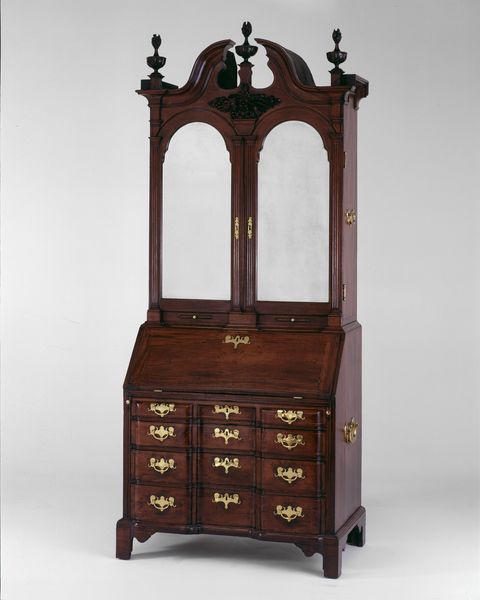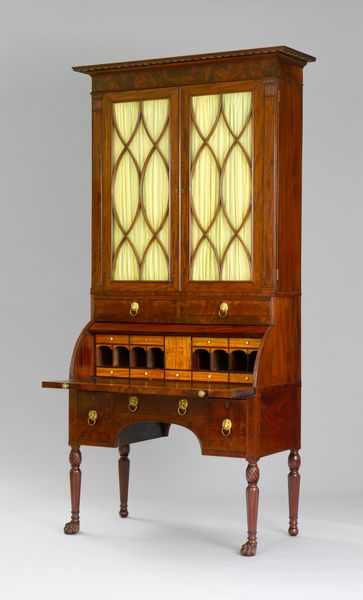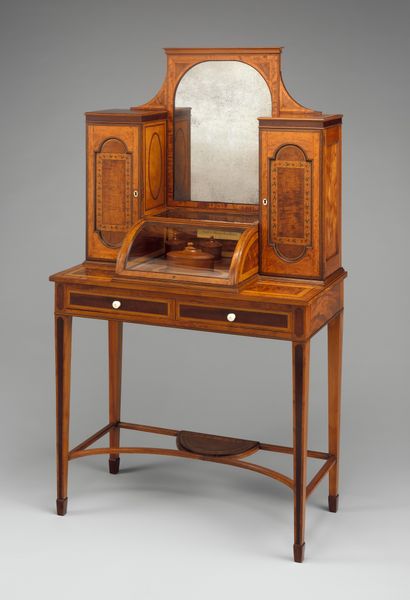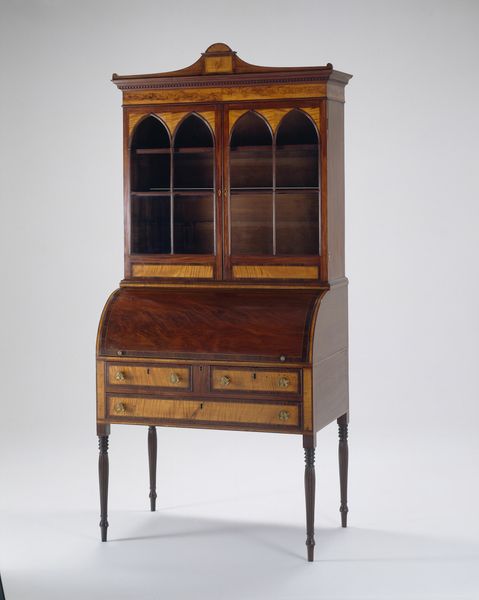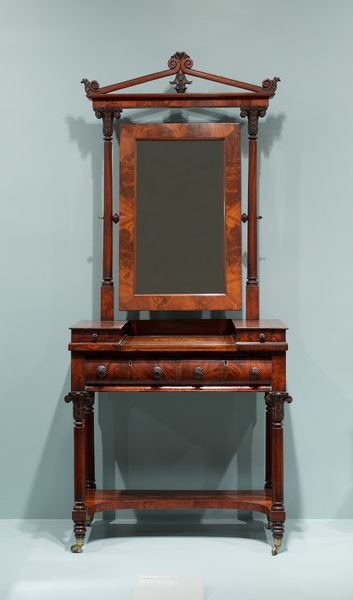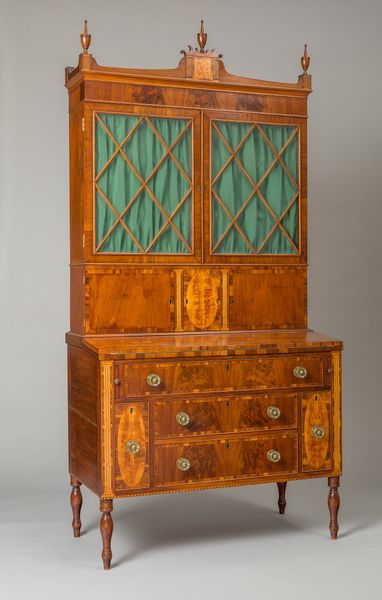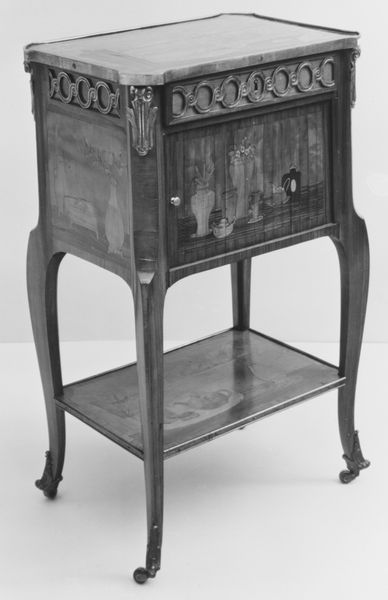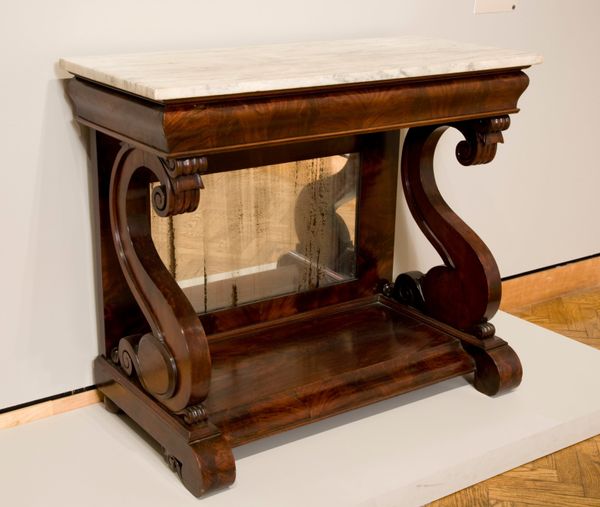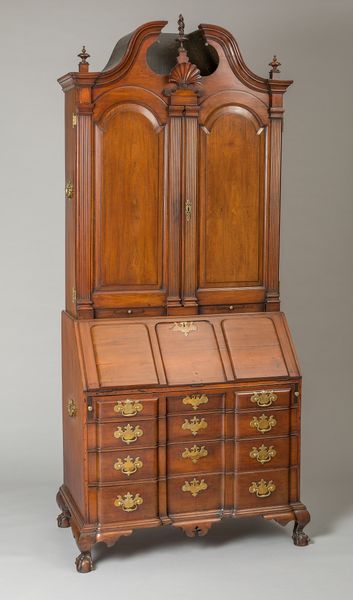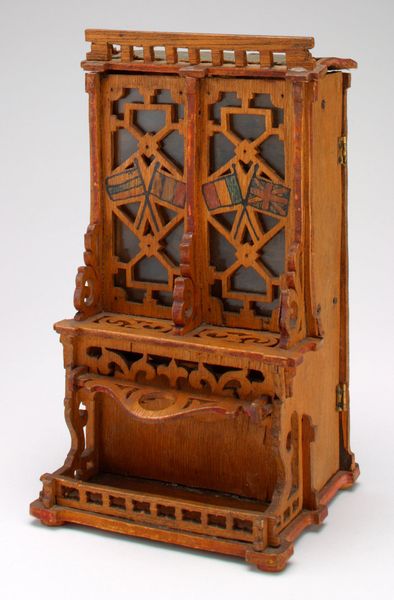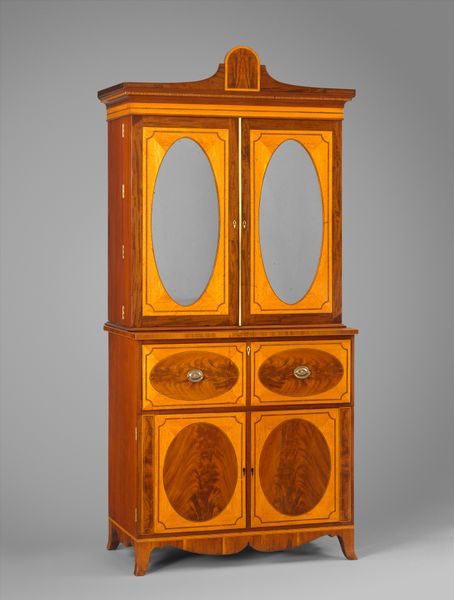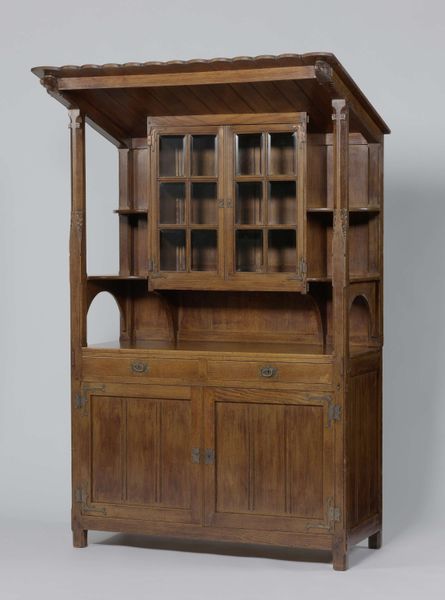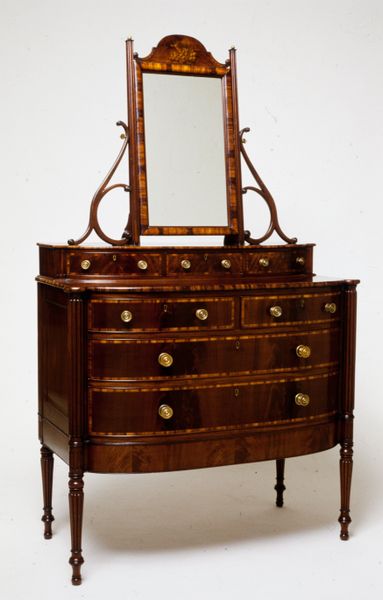
sculpture, wood
#
sculpture
#
furniture
#
classical-realism
#
sculpture
#
united-states
#
wood
#
decorative-art
Dimensions: 94 1/2 x 42 1/2 x 21 3/4 in. (240.03 x 107.95 x 55.25 cm)
Copyright: Public Domain
Curator: This piece is an anonymous "Secretary," dating from 1830 to 1850, made in the United States out of wood. The object is currently located at the Minneapolis Institute of Art. It definitely evokes a sense of restrained elegance. What catches your eye about it? Editor: Well, initially, I'm struck by the imposing presence. It seems like more than just a functional piece of furniture. How do you interpret its significance beyond its practical use as a writing desk? Curator: Precisely! We can explore its role in shaping ideas about domesticity, class, and gender roles during the 19th century. How do you think a piece like this, with its embedded mirror and lockable compartments, might have served to both empower and constrain women in the domestic sphere? Editor: It's fascinating to consider its connection to gender. The lockable compartments suggest a private space for women, perhaps for correspondence or personal reflection. But wouldn't it also be seen as contributing to confining women to the domestic sphere? Curator: Exactly! This piece is situated in a very particular political and historical period. We have to wonder if it signifies power and agency, or whether the rise in popularity of women possessing items such as these signifies them becoming possessions themselves. Is it simply a status symbol of wealth? A well-off man could essentially lock up his money *and* his wife’s thoughts at the same time, no? Editor: That's a really provocative thought. It pushes me to see it beyond its surface beauty, to consider the socio-political context it existed within. It’s definitely changed my initial perspective. Curator: It prompts us to question the assumed narratives of progress and empowerment embedded within material culture. Hopefully, by encouraging people to view this sculpture from these different critical lenses, we can highlight conversations and understandings of social history, cultural identity, gender dynamics, and political and social discourse. Editor: I definitely learned how objects can reflect broader social dynamics.
Comments
No comments
Be the first to comment and join the conversation on the ultimate creative platform.
